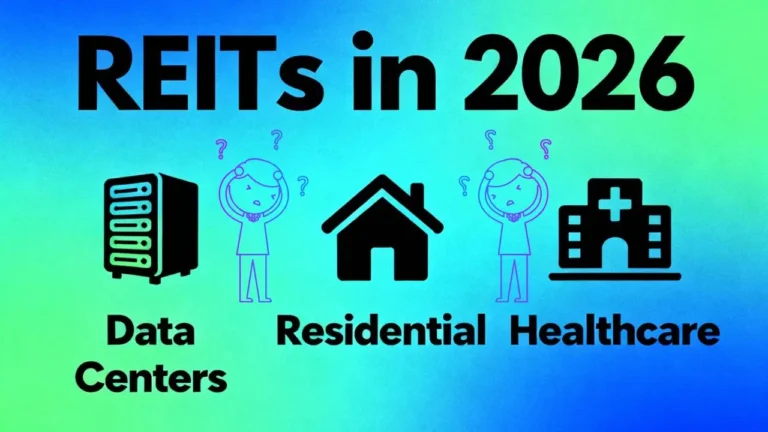In today’s fast-paced world, the allure of earning money without constant effort is undeniable. Passive income offers a pathway to financial freedom, allowing individuals to generate revenue streams with minimal ongoing involvement. As we approach 2026, it’s essential to explore realistic and sustainable passive income opportunities that balance moderate risk with a low time commitment.
Exploring Passive Income Opportunities
Passive income isn’t about making money without doing anything; it’s about setting up systems that continue to earn money with minimal active involvement. By leveraging initial effort or capital, individuals can create income streams that require little maintenance over time. In 2026, the landscape of passive income continues to evolve, offering diverse avenues for those seeking financial growth without dedicating excessive time.
Overview Table: Passive Income Ideas for 2026
| Income Stream | Risk Level | Time Commitment | Initial Investment | Potential Earnings |
|---|---|---|---|---|
| Dividend Stocks | Moderate | Low | Medium | Moderate |
| High-Yield Savings Accounts | Low | Very Low | Low | Low |
| Real Estate Crowdfunding | Moderate | Low | Medium | Moderate |
| Print-on-Demand Businesses | Low | Low | Low | Low to Moderate |
| Digital Products (eBooks, Courses) | Low | Low | Low | Moderate to High |
| Peer-to-Peer Lending | Moderate | Low | Medium | Moderate |
1. Dividend Stocks: Earning Through Equity
Investing in dividend-paying stocks remains a cornerstone of passive income strategies. By purchasing shares in established companies that distribute a portion of their profits to shareholders, investors can receive regular dividend payouts.
Pros:
- Regular income through dividends
- Potential for capital appreciation
- Relatively low time commitment once investments are made
Cons:
- Market volatility can affect stock prices
- Requires initial capital investment
- Dividends may be subject to taxation
Tips:
- Diversify your portfolio to mitigate risks
- Reinvest dividends to compound returns
- Stay informed about market trends and company performance
2. High-Yield Savings Accounts: Safe and Steady
For those seeking a low-risk passive income stream, high-yield savings accounts offer a straightforward solution. These accounts provide higher interest rates compared to traditional savings accounts, allowing your money to grow with minimal effort.
Pros:
- Low risk with FDIC insurance
- Easy access to funds
- No maintenance required
Cons:
- Lower returns compared to other investment options
- Interest rates may fluctuate
Tips:
- Compare rates from different banks to find the best option
- Ensure the bank is FDIC insured for added security
- Use as a place to park emergency funds
3. Real Estate Crowdfunding: Investing Without Ownership Hassles
Real estate crowdfunding platforms allow individuals to invest in real estate projects without the need to own property directly. By pooling funds with other investors, you can participate in commercial or residential real estate ventures.
Pros:
- Access to real estate markets with lower capital
- Potential for attractive returns
- Passive involvement after initial investment
Cons:
- Platform fees can reduce returns
- Investments may be illiquid
- Market risks affecting property values
Tips:
- Research and choose reputable crowdfunding platforms
- Understand the terms and fees associated with each investment
- Diversify investments across different projects
4. Print-on-Demand Businesses: Monetizing Creativity
Print-on-demand (POD) services allow individuals to design custom products like t-shirts, mugs, and posters, which are then printed and shipped by a third-party provider. This model eliminates the need for inventory management and upfront costs.
Pros:
- Low startup costs
- No inventory management
- Scalable business model
Cons:
- Profit margins can be thin
- Requires effective marketing to drive sales
- Dependence on third-party providers for fulfillment
Tips:
- Focus on niche markets to reduce competition
- Utilize social media platforms for marketing
- Regularly update designs to keep the product line fresh
5. Digital Products: Earning from Knowledge and Creativity
Creating and selling digital products such as eBooks, online courses, or digital art can be a lucrative passive income stream. Once developed, these products can be sold repeatedly with minimal additional effort.
Pros:
- High-profit margins
- Global market reach
- Low overhead costs
Cons:
- Requires initial time investment to create quality products
- Marketing efforts needed to reach potential customers
- Intellectual property protection considerations
Tips:
- Identify topics with high demand and low competition
- Use platforms like Udemy or Gumroad for distribution
- Continuously update and improve products based on feedback
6. Peer-to-Peer Lending: Earning Interest by Lending
Peer-to-peer (P2P) lending platforms connect borrowers with individual lenders, allowing you to earn interest on your investments. By lending money to individuals or small businesses, you can generate passive income through interest payments.
Pros:
- Potential for higher returns compared to traditional savings
- Diversification of investment portfolio
- Passive income through interest payments
Cons:
- Risk of borrower defaults
- Platform fees can reduce returns
- Investments may be illiquid
Tips:
- Diversify loans across multiple borrowers to mitigate risk
- Research borrower profiles and credit histories
- Start with small investments to test the platform
Conclusion
Embarking on a passive income journey in 2026 offers numerous opportunities to build wealth with moderate risk and minimal time commitment. Whether through dividend stocks, high-yield savings accounts, real estate crowdfunding, print-on-demand businesses, digital products, or peer-to-peer lending, individuals can find a path that aligns with their financial goals and lifestyle.
Remember, the key to successful passive income is consistency and informed decision-making. By carefully selecting and managing your income streams, you can create a sustainable financial future with less active involvement.
FAQs
Q1: What is the best passive income option for 2026 with moderate risk?
Ans: Dividend stocks, real estate crowdfunding, and peer-to-peer lending are some of the best passive income options in 2026 that offer moderate risk and a low time commitment.
Q2: How much time do I need to spend on passive income streams?
Ans: Most moderate-risk passive income streams, such as dividend stocks or high-yield savings accounts, require minimal ongoing effort, usually a few hours per month to monitor performance.
Q3: Can I start passive income with a small investment in 2026?
Ans: Yes. Options like high-yield savings accounts, print-on-demand businesses, and digital products allow you to start with low initial capital while still generating meaningful returns over time.
Q4: Is passive income risk-free?
Ans: No. While some options like high-yield savings accounts are low-risk, most passive income streams carry moderate risk. Proper research and diversification are essential to minimize losses.








No Comments Yet
Be the first to share your thoughts.
Leave a Comment